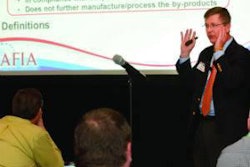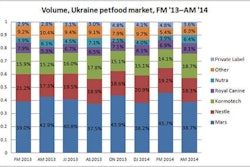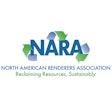The American Feed Industry Association (AFIA) has updated the requirements of its FSC36 Safe Feed/Safe Food Certification Program to support the new requirements outlined in the Food Safety Modernization Act (FSMA) as well as help drive continuous improvement within a location's quality and feed safety program.
The updated requirements are listed as the FSC36 Safe Feed/Safe Food Guidance Document on the Safe Feed/Safe Food website and will take effect beginning March 1.
The goals of the updated document are to assist facilities with designing, developing, implementing and maintaining a quality and feed safety program that complies with the desired requirements and to assist auditors with auditing locations seeking certification for FSC36 Safe Feed/Safe Food. The guidance offers numerous examples to assist facilities with preparation for compliance of the requirements.
"The new guidance document provides a 'user-friendly' FSC36 Safe Feed/Safe Food certification," said Henry Turlington, AFIA director of quality and manufacturing regulatory affairs. "The new requirements improve the certification process that drives continuous improvement of a company's quality and food safety program. FSC36 Safe Feed/Safe Food certification is tool AFIA recommends because it supports compliance with FSMA."
The requirements for FSC36 Safe Feed/Safe Food certification include Current Good Manufacturing Practices for animal feed production as well as the requirements for an effective animal food safety program. FSC36 requirements support a risk-based management system that is documented and implemented by a facility (supplier) of feed or feed-related products to control animal food safety.
"The changes to the requirements to obtain FSC36 Safe Feed/Safe Food are minimal; however, the process for completing the certification has been streamlined to create a more user-friendly program," Turlington said.
"The number of elements has been reduced from 230-plus elements to 77 elements to allow auditors to spend more time reviewing documentation and manufacturing processes," he said. "And, FSC36 will now be a 'Continuous Improvement' program versus a 'Compliant' program."
Previously, facilities were required to comply with each element in order to obtain certification. The new process will allow the auditor to assess the effort and progress by a facility to comply with the FSC36 Safe Feed/Safe Food Guidance Document. The facility will be scored based on these efforts. The assessment process will provide the facility with better direction for continuous improvement and compliance with FSMA. The continuous improvement process is consistent with the FSC32 and FSC34 programs. This also allows AFIA to take advantage of the Safe Quality Food Institute tools more effectively.
"Another change to the program is the 'self-audit' is being replaced by a 'surveillance audit' (or remote audit) that will be completed by the certifying body (CB). The surveillance audit is an abbreviated version of the on-site audit and covers 'mandatory' elements," said Turlington. "The process and the quality of the audit will be greatly improved as the CB is more involved with the assessment and the facility provides supporting evidence only, and an on-site audit will continue to be completed every two years."
Safe Feed/Safe Food launched in 2004, with the first facilities obtaining certification the next year. Since the beginning of the Safe Feed/Safe Food program, the number of certifications has expanded to four options. FSC36 is the most popular certification and is considered the core offering of the program. In 2013, AFIA partnered with SQFI to administer the Safe Feed/Safe Food program.














